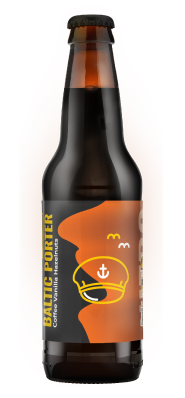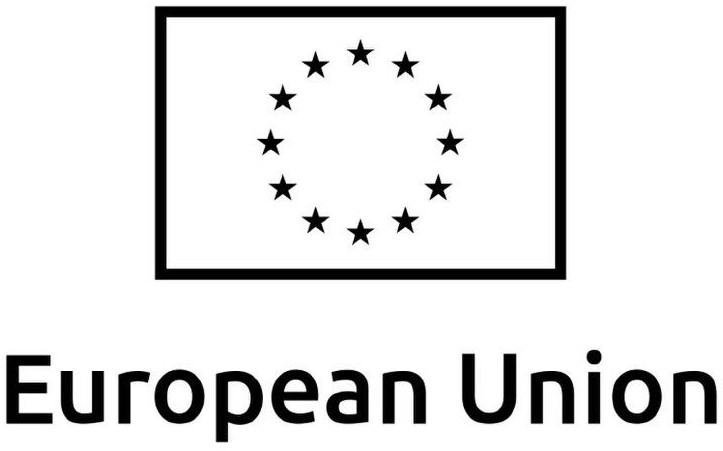Our annual tradition of releasing premiere brews of Baltic Porter on Baltic Porter Day had to become a reality. This year we have brewed not only one, but three aromatic versions of this style!
Extractive base (aged at low temperatures for almost half a year!), was divided into three parts and after that… we added something special into each one of them. The main factor that distinguishes Baltic porter from Imperial Stout style is primarily the balance shifted towards the malt side and the intense exposure of aromas derived from caramel malts. As we all like and appreciate the aroma of freshly roasted coffee, we decided to use it as an addition to one of the new versions. The Brazil Patrocinio variety we used is perfectly composed not only with the addition of a dark, malt base, but also vanilla and roasted nuts.
An interesting taste experience will be to let the beer warm up to a temperature of about 17-18 *C, it will then return with an even fuller and complex aroma!
 |
 |
WRCLW Baltic Porter Coffee, Vanilla & Hazelnuts NITROTo the extractive base of the Baltic Porter we added extremely aromatic Madagascar vanilla sticks, roasted hazelnuts and BRAZYLIA PATROCINIO coffee beans from from our local roastery – Czarny Deszcz! In this way, we have created an incredibly delicious combination, which is bound in a dessert whole by a velvety texture obtained thanks to nitrogen saturation! |
Style
The Baltic Porter style, as the name suggest, evolved in the Baltic Sea region in the 19th century as a response to the British Imperial Stout. In contrast, it has a more intense malt foundation, a more harmonized bouquet, and most of all – it is a bottom fermentation beer. In fact, it’s a darker version of a Bock with less “aggressive” roasted notes and low levels of esters (compounds responsible for fresh fruit aromas). It will certainly warm you up, but despite of the high alcohol contante it remains highly drinkable and pleasant in taste.
Malts/extract:
Similarly to the Bock style, the malt foundation is made mainly of Munich malt which gives it more fullness and sweetness. Caramel malts provide an extra boost while introducing a large amount of melanoidins reminiscent of caramelised bread crust in the aroma. Colouring/roasting malts give a beer dark colour, but unlike Imperial Stout it is not opaque but contains ruby highlights.
Hops:
We use traditional German hops. The high extract needs to be countered with the right bitterness, so most of the hops went into the brew kettle at the beginning of the boil. However, the hop aroma was left ‘behind’, providing only a background for the adds and malt notes.
Ageing:
Such thick and intense beers store* as well as good wines. That’s why it’s a great idea to buy several bottles and open them at longer intervals (every half a year, every year) to compare how the beer changes. With the passing time, this beer should gain notes of porto, sherry and dried fruit (plums, sultanas and cherries).
*Make sure the beer is stored in optimal conditions (temperature of about 10C, no exposure to sunlight) and it’s going to produce noble oxidization notes.
Nitrogen infused beer:
The idea behind infusing beers with nitrogen rather than carbon dioxide is to increase its drinkability and change its structure into more creamy.
Nitrogen’s ability to dissolve in liquids is several times lower than that of carbon dioxide. What we have used at Browar Stu Mostów is advanced technological solutions that allow us to dissolve as much nitrogen as possible in beer. Right after opening and pouring the beer into a glass, nitrogen escapes as quickly as possible creating a cascade effect with a huge amount of tiny bubbles. After a while, nitrogen moves up whisking protein dissolved in beer. As a result of this process, creamy and long-lasting beer head made of tiny bubbles is produced, which is not possible in carbonated beers.
To fully enjoy the nitro beer, don`t forget to serve it in a right way:
– cool the bottle down to <7 ⁰C; don’t shake it;
– open the bottle quickly and pour the beer into a glass holding the bottle vertically;
– now you can enjoy the cascade effect, which produces a beautiful beer head of tiny bubbles.
This style is unique for its thickness. For this reason, the cascade effect takes place as if in a “slow motion”. High thickness and stickiness make the bubbles to go up slowly. It is recommended to wait a bit longer before pouring the beer into a glass to give the nitrogen bubbles more time to act. It’s not a waste time, cause the process itself looks quite impressive!
-
- Style: Baltic Porter NITRO
- Parameters
- Extract: 25,0 %
- Alcohol: 9,1 %
- IBU: 40
- Ingredients:
- Malts: Munich, cross-section of German caramel malts, Palette of British dark malts
- Hop: traditional German varieties
- Yeast: homebrewed bottom fermentation strain
- Additives: freshly roasted coffee from the local, Czarny Deszcz roastery (Brazil Patrocinio variety), Madagascar vanilla, roasted hazelnuts.
- Appearance: dark brown, almost black, with ruby flashes, with a beige, very fine bubble foam, built up by a cascading effect
- Aromas: malty, bread, sponge cake, sultanas, molasses
- Mouthfeel:
- bread and caramel
- mineral, velvety, smooth
- long finish with dark chocolate and caramel sweetness
- Serving temperature: 12-17 ⁰C
- Glass: Tulip, Sniffter
- Foodpairing:
Cheese: Pecorino aged sheep’s milk cheese with black truffle
Desserts: dark chocolate pralines with orange peels, caramel and salt, New York Cheesecake with caramel & salted pistachios

